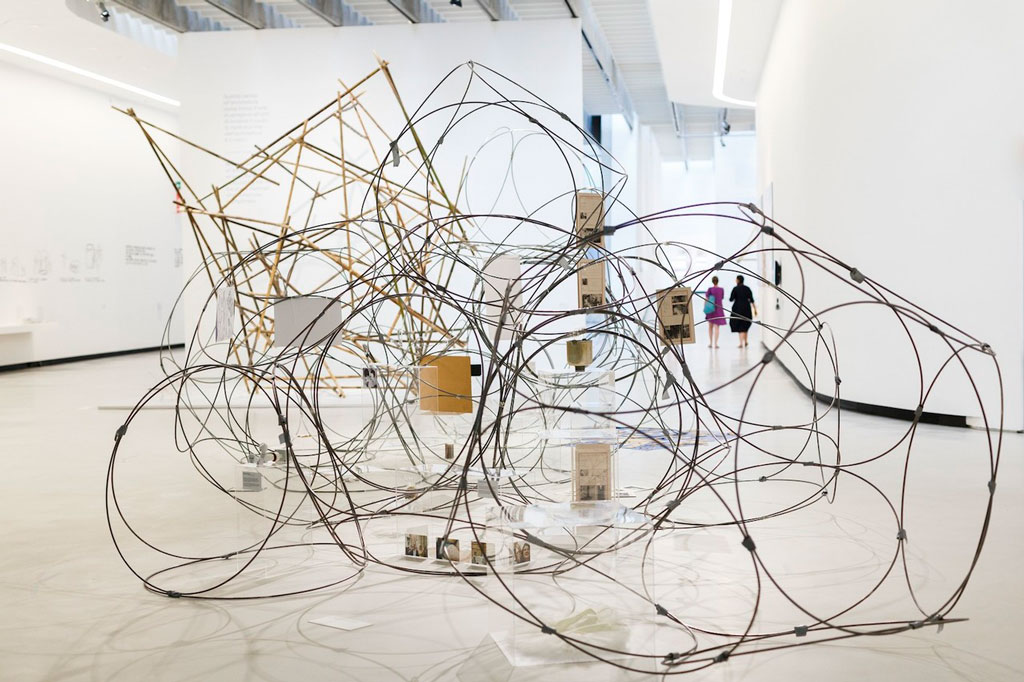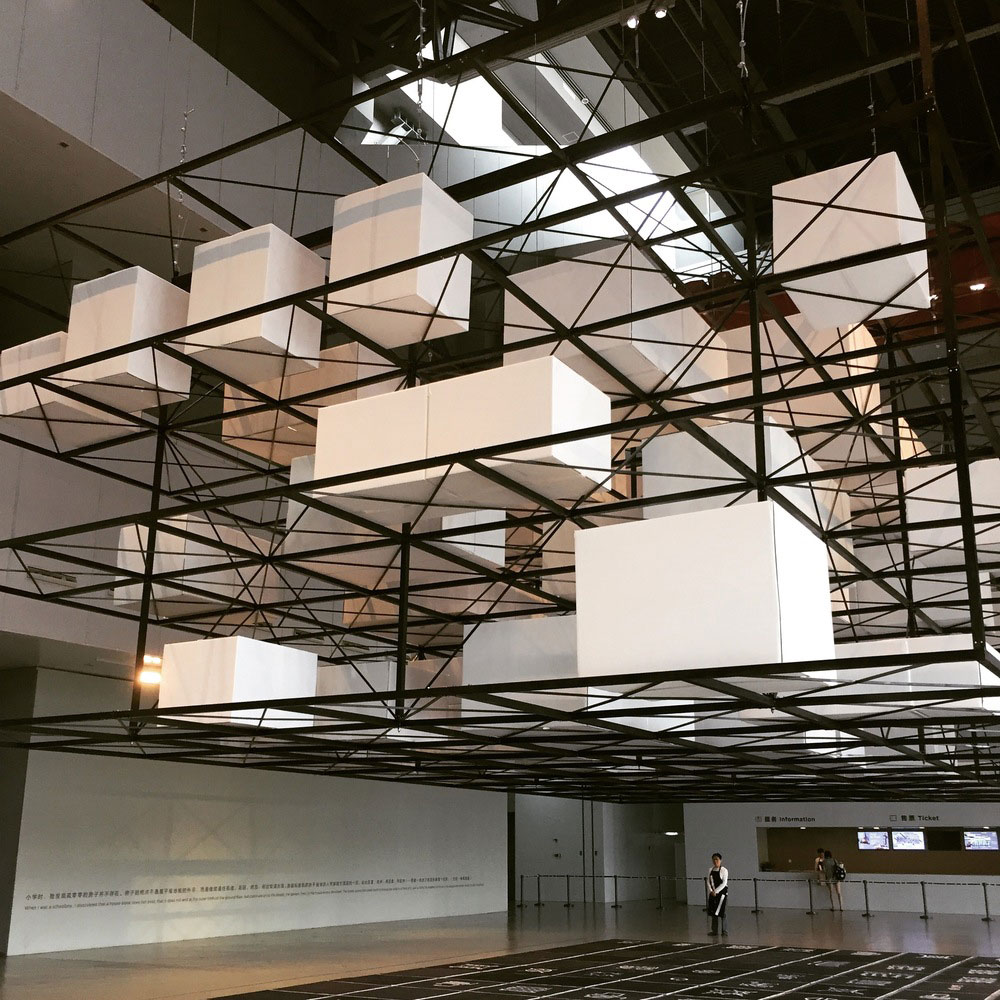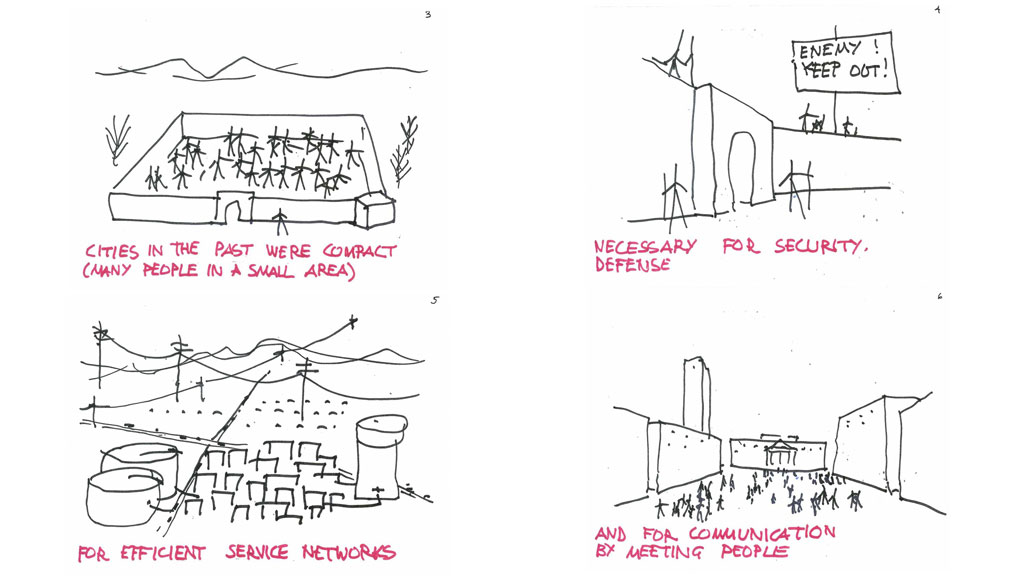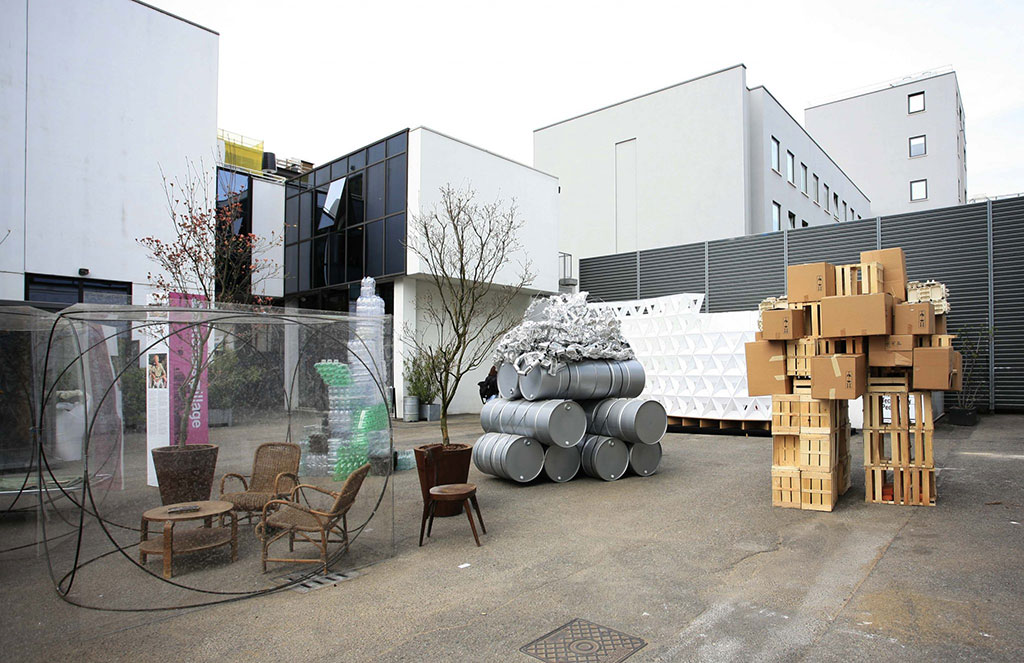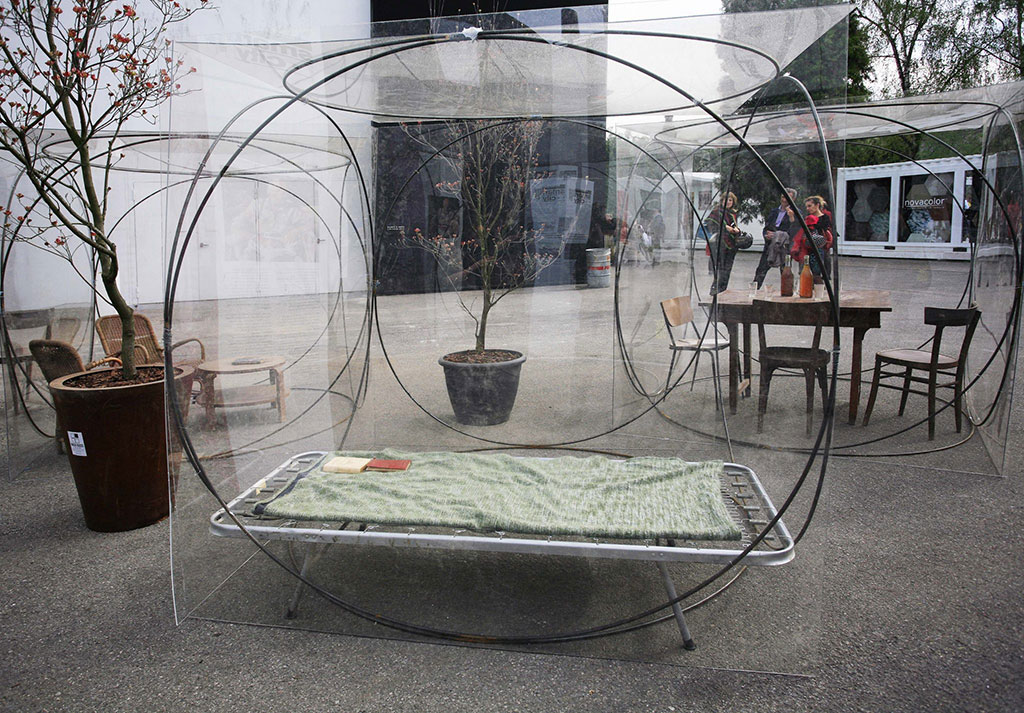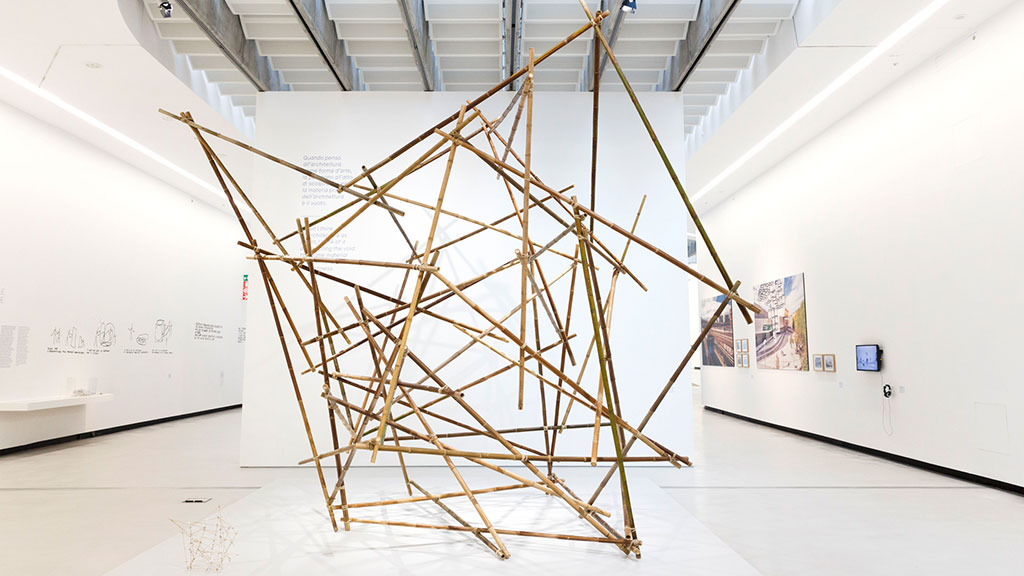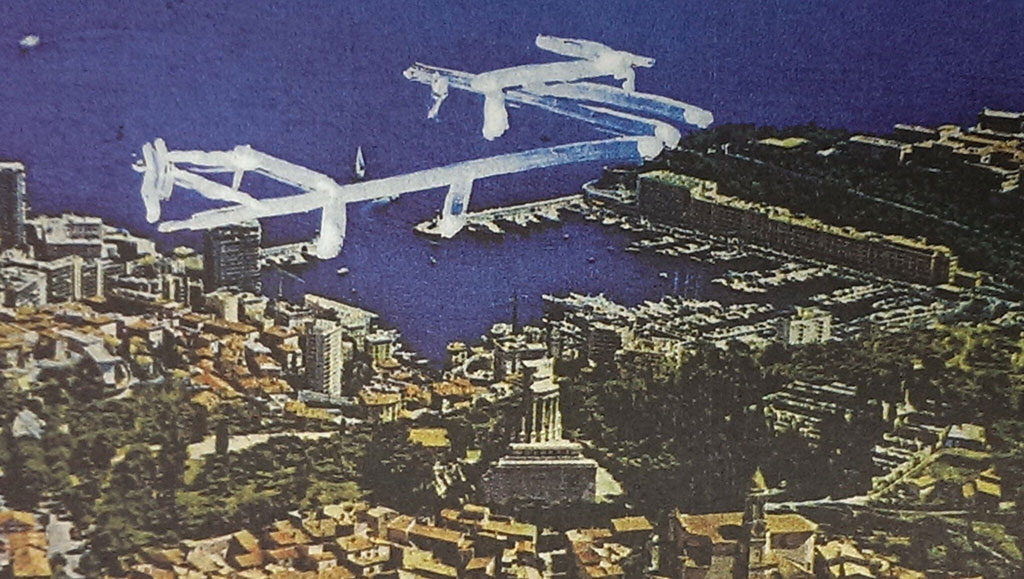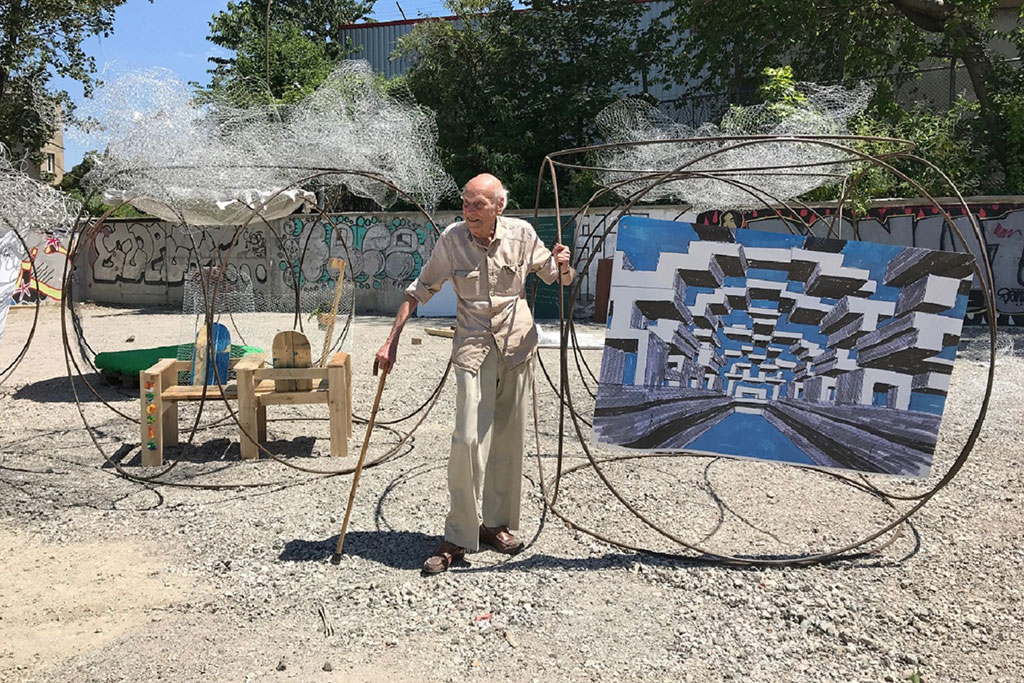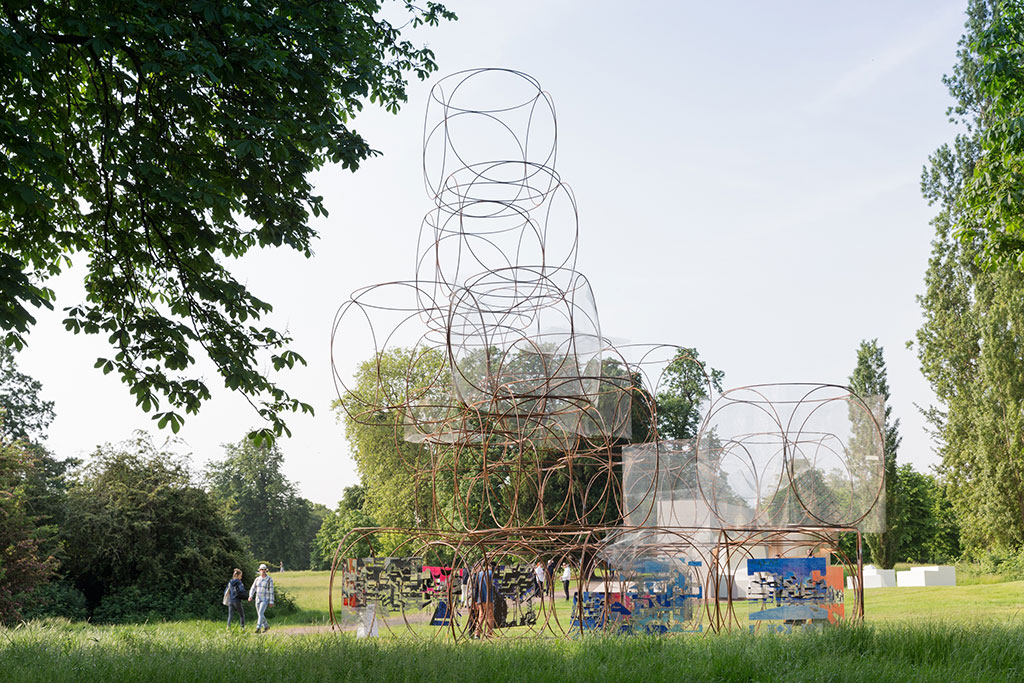ARCHITECTURE: Yona Friedman
 Yona Friedman (5/6/1923-20/2/2020) is a historical figure of prospective architecture with more than 92 years of experience that has led him to participate in numerous events, after World War II he briefly lived and worked in Israel where he was confronted with the rapid development of mass housing. The confinement and anonymity of the individual in such designs inspired him to take a new approach to the need for housing vast amounts of people in ever growing cities.
Yona Friedman (5/6/1923-20/2/2020) is a historical figure of prospective architecture with more than 92 years of experience that has led him to participate in numerous events, after World War II he briefly lived and worked in Israel where he was confronted with the rapid development of mass housing. The confinement and anonymity of the individual in such designs inspired him to take a new approach to the need for housing vast amounts of people in ever growing cities.
By Dimitris Lempesis
 Yona Friedman grew up in Hungary in a Jewish intellectual climate. One of his professors spotted his talent and helped him to a special permission that allowed him to study architecture, in spite of being Jewish. The World War II would leave an indelible mark on the young Friedman. He joined the resistance during the brief period that the Germans occupied Hungary. Betrayal almost cost him his life. His wartime experience was to be of particular significance in giving direction and definition to the themes underlying his work, such as individual choice and full citizenship. His ideas concerning the survival of the urban dweller in very harsh conditions can also be traced back to this experience. After the war he decided to leave Hungary and went to Rumania and from there to Israel where he continued his studies. In Israel he did feel a citizen, equal to anybody else. To pay for his upkeep he worked as a construction worker. This work set off a very practical approach to architectural solutions. Friedman received his first commissions soon after graduation. Israel faced an influx of immigrants in need of accommodation. Friedman soon stood out because of his unconventional views. He wanted, for example, to allow occupants themselves to influence the design of their housing environment. During his student years and as a young architect, he found little support for his ideas. He therefore hoped to discover sympathizers within the circles of the Congrès lnternationaux d’Architecture Moderne (CIAM) and went to the congress in Dubrovnik in 1956 where he presented his ideas for change in the views on urban development. As a result he visited Amsterdam and unfolded his ideas on Mobile Architecture in letters to Jacob Bakema, who was then secretary of the coordinating committee set up to reorganize CIAM. Friedman outlined his ideas to involve public opinion in formulating innovative principles for designing the living environment or ‘habitat’. He expressed the hope that innovative forces would continue to be represented within CIAM. Friedman’s ideas had little impact within the reorganized CIAM. In order to form a closer alliance with colleagues and to propagate further his ideas on Architecture Mobile, Friedman established the Groupe d’Études d’Architecture Mobile(GEAM) in November 1957 with Jan Trapman. The publication of an article about Friedman’s work in Bauwelt by Günter Kühne led to new contacts, especially with Frey Otto. He also became acquainted with Gerrit Rietveld from the Netherlands and the Polish architect Jerzy Soltan. From 1957 to 1960 the GEAM met a number of times. Membership was to grow internationally and participants came from Western Europe and Japan. In April 1960 the group formulated its principles. They stated that urban planning had failed, its methods and approaches were outdated and investment was too costly. This explained problems such as the traffic congestion, the poor quality accommodation, the exodus from the city at weekends, and the social isolation of many urban dwellers. The group found the solution in working with flexible structures made from affordable, prefabricated elements. Occupants must be made able to decision making, and technology has to serve their individual wishes. The work of GEAM continued for a few years. Apart from this professional alliance, he maintained contact with a number of sympathetic Dutch thinkers; the architect N. John Habraken who himself had developed a complete plan for mobile mass housing and Constant Nieuwenhuys, who at the time was working on his New Babylon project. Beyond the similarities, Friedman also underlined a number of fundamental differences between him and these colleagues. He stated that Habraken thought as an engineer and Nieuwenhuys as an artist, while he himself operated as a sociologist. He prepared a project to be carried out in association with the industrial designer Jean Prouvé, and he met Le Corbusier, who encouraged the young architect. In 1960 Kenzo Tange from Japan and other Metabolists became aware of Friedman’s work.
Yona Friedman grew up in Hungary in a Jewish intellectual climate. One of his professors spotted his talent and helped him to a special permission that allowed him to study architecture, in spite of being Jewish. The World War II would leave an indelible mark on the young Friedman. He joined the resistance during the brief period that the Germans occupied Hungary. Betrayal almost cost him his life. His wartime experience was to be of particular significance in giving direction and definition to the themes underlying his work, such as individual choice and full citizenship. His ideas concerning the survival of the urban dweller in very harsh conditions can also be traced back to this experience. After the war he decided to leave Hungary and went to Rumania and from there to Israel where he continued his studies. In Israel he did feel a citizen, equal to anybody else. To pay for his upkeep he worked as a construction worker. This work set off a very practical approach to architectural solutions. Friedman received his first commissions soon after graduation. Israel faced an influx of immigrants in need of accommodation. Friedman soon stood out because of his unconventional views. He wanted, for example, to allow occupants themselves to influence the design of their housing environment. During his student years and as a young architect, he found little support for his ideas. He therefore hoped to discover sympathizers within the circles of the Congrès lnternationaux d’Architecture Moderne (CIAM) and went to the congress in Dubrovnik in 1956 where he presented his ideas for change in the views on urban development. As a result he visited Amsterdam and unfolded his ideas on Mobile Architecture in letters to Jacob Bakema, who was then secretary of the coordinating committee set up to reorganize CIAM. Friedman outlined his ideas to involve public opinion in formulating innovative principles for designing the living environment or ‘habitat’. He expressed the hope that innovative forces would continue to be represented within CIAM. Friedman’s ideas had little impact within the reorganized CIAM. In order to form a closer alliance with colleagues and to propagate further his ideas on Architecture Mobile, Friedman established the Groupe d’Études d’Architecture Mobile(GEAM) in November 1957 with Jan Trapman. The publication of an article about Friedman’s work in Bauwelt by Günter Kühne led to new contacts, especially with Frey Otto. He also became acquainted with Gerrit Rietveld from the Netherlands and the Polish architect Jerzy Soltan. From 1957 to 1960 the GEAM met a number of times. Membership was to grow internationally and participants came from Western Europe and Japan. In April 1960 the group formulated its principles. They stated that urban planning had failed, its methods and approaches were outdated and investment was too costly. This explained problems such as the traffic congestion, the poor quality accommodation, the exodus from the city at weekends, and the social isolation of many urban dwellers. The group found the solution in working with flexible structures made from affordable, prefabricated elements. Occupants must be made able to decision making, and technology has to serve their individual wishes. The work of GEAM continued for a few years. Apart from this professional alliance, he maintained contact with a number of sympathetic Dutch thinkers; the architect N. John Habraken who himself had developed a complete plan for mobile mass housing and Constant Nieuwenhuys, who at the time was working on his New Babylon project. Beyond the similarities, Friedman also underlined a number of fundamental differences between him and these colleagues. He stated that Habraken thought as an engineer and Nieuwenhuys as an artist, while he himself operated as a sociologist. He prepared a project to be carried out in association with the industrial designer Jean Prouvé, and he met Le Corbusier, who encouraged the young architect. In 1960 Kenzo Tange from Japan and other Metabolists became aware of Friedman’s work.
Friedman moved to Paris at the invitation of Jean Prouvé. There he married Denise Charvein. She was an editor in the French film industry and supported and assisted Friedman until she died in 2007. In 1960 they made animation films together that depicted African folk stories. These films were awarded by the French government and in 1962 one story won the Golden Lion Award in Venice. Although educated as an architect, in practice Friedman involved himself with the less conventional aspects of the profession. Friedman revealed himself to be a rigorous ethicist, averse to all expressions of compulsion or dictate. To him the individual is central. He intentionally steered clear of any alliance with political or intellectual movements. It was of importance for Friedman that he would be able to convey his views in unequivocal fashion. Originally he focused on the possibility of realizing his ideas. Friedman fully understood that his convictions differed greatly from the prevailing opinions. As a consequence he came to concentrate mainly on communicating his opinions. In developing and propagating his concepts, Friedman has often worked beyond the field of architecture while consciously tailoring his language to his audience. Teaching gave him the freedom to further develop his ideas. Through his teaching activities and publications (over 500 articles and several books), his body of ideas became widely diffused within various spheres of society.
Ideas and projects by Friedman have always been closely related to the political and scientific topics of their time: The elaboration of the concept in L’Architecture Mobile and in the Ville Spatiale was a response to pressing issues of the 1950s such as increasing urbanization and world population; -In the 1960s issues of democracy and influence on political control surfaced within western society. During this period Friedman compiled his manuals for the non-specialist in the field of architecture, urban planning, and administration; In the 1970s the subject of poverty and population growth in the Third World attracted widespread attention. There was also growing uncertainty about whether the western world was on the right course. Friedman was to identify with this line of reasoning by extending his concepts for the Ville Spatiale with ideas for self-sufficiency in urban communities, applicable in both, the slums of the Third World and the modern western city; In the 1980s and 1990s architects have diligently pursued new design principles in response to the international functional style. Owing to his long-standing unease with the working methods of architects, Friedman saw an opportunity to explore further his ideas for an architecture without geometric forms. Throughout his life Friedman has produced all kinds of artwork. The interior of his house is the most striking example. In the privacy of his own home Friedman practices a form of visual art. The walls are covered with all sorts of drawings and paintings in which magical figures like the unicorn are combined with philosophical texts. These wall coverings are complemented by sculptures made out of found objects and packaging material, models of his projects, and countless knick-knacks serving as memory aids. In 1999 an exhibition in NAi (Netherlands) of the life size interior of his living room and the monograph “Yona Friedman. Structures serving the unpredictable”, put Friedman’s work back in the spotlights. Earlier work was republished and new work surfaced, especially in the numerous exhibitions that followed in the years after. His artistic qualities were highly sought after and he himself became more and more engrossed in designing principles to create cultural space. Also he (re-)published his ideas and philosophies in cartoon manuals that were made into slide shows with the help of Jean-Baptiste Decavèle. He underlined the relation between his artwork and his development as an architect and intellectual in describing his Merz-principles.